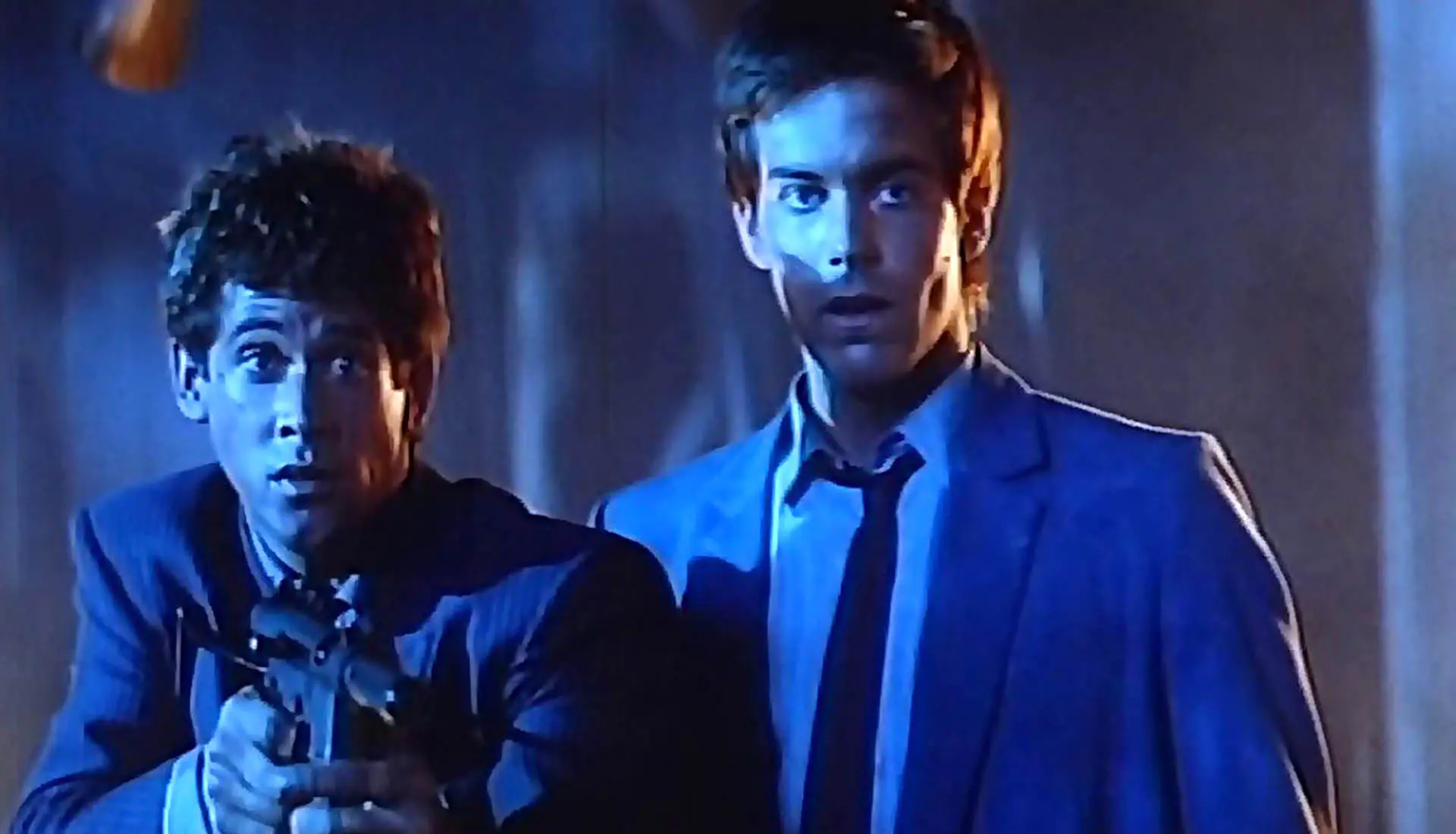RADIOACTIVE DREAMS. Science fiction like a disco after a nuclear war

In 2022, Albert Pyun passed away, leaving behind a legacy of B-movie hits such as “Nemesis”, “Cyborg“, “Knights“, and the infamous “Captain America” starring Matt Salinger. “Radioactive Dreams” is a production from the early days of his directorial career, right after “The Sword and the Sorcerer”. This film is meant only for experienced genre fans who can overlook all its technical flaws but are seeking the unique atmosphere of a post-apocalyptic reality after a global nuclear war. The film looks almost like a live-action reenactment by different groups pretending what it would be like if our civilization plunged into chaos after a nuclear end of the world. And this entire visual and cultural degradation is accompanied by electro-pop disco music from the 1980s.
The protagonists of the film are two very cheerful-for-a-post-apocalypse guys – that’s what I’d call them – Philip Chandler (John Stockwell) and Marlowe Hammer (Michael Dudikoff). One is named after a famous crime novelist, while the other took his first name from a well-known detective from film and literature. The joke behind these references is that the protagonists were locked in a fallout shelter as young children and spent 15 years there, reading only crime fiction. Since no one was responsible for raising them, the books took on the role of parents. They adopted both the identities and the worldview of the characters they read about. Unfortunately, the post-nuclear reality of 2001 was nothing like what they imagined from the books, a fact they painfully discovered right from the start. There was also another issue. The world depicted in the film revolves around an interesting concept involving keys. According to the plot, the nuclear war broke out in 1986, and all the nuclear warheads humanity possessed were launched – except for one. To activate it, two keys were needed, and it just so happens that the film’s protagonists have them, though they initially have no idea what they are for. They quickly learn, however, that in this world they’ve emerged into, those keys represent unlimited power over the city of Edge City.

So everyone wants to get their hands on these keys – lone marauders, gangs, and mutants alike. No one can be trusted. You can only rely on yourself, but how do you do that when you’re as naive as the two protagonists? And that’s the film’s style: the slightly humorous juxtaposition of a post-apocalypse with the innocence of two detective wannabes. After a brief and painful “training” conducted by young criminals, a giant mutated dog, women pretending to be passionate lovers, and cannibals, Chandler and Marlowe find their place in the new reality. This happens to the intense sounds of new wave electro-pop. Some scenes even resemble music videos, especially the one where the protagonists flee from the leader of one of the gangs, Miles Archer, accompanied by a concert-like performance by Sue Saad with her band Next. Interestingly, this group gained popularity just as it was coming to an end, when the soundtrack to “Radioactive Dreams” was released. Despite the band’s breakup, Albert Pyun maintained a collaboration with one of its members, Tony Riparetti, who went on to compose music for several more of Pyun’s films. The very specific musical layer of “Radioactive Dreams” is important not just because of the sounds themselves but also for the role the music plays in keeping the pace of the action. The plot is a constant chase, with the protagonists fleeing from gangs. There are few moments of respite until the wild ending, where all the characters converge in a total showdown. The protagonists finally find their place in a post-apocalyptic world, where technology has started a new, eclectic existence. So, what can you become after emerging from a bunker? The answer may surprise you, and the sight of Michael Dudikoff dancing so freely suggests he was a wasted talent for comedy and musicals, stuck in low-budget films.

“Radioactive Dreams” resembles a pastiche of action films, science fiction, and post-apocalypse genres. From the beginning, Albert Pyun wanted to blend many genres – mainly adding comedy, musicals, post-apocalypse, and noir vibes to science fiction. That’s why he dressed the protagonists in 1940s-style clothing, while the rest of the costumes were borrowed from the punk subculture. Due to budget constraints, he also avoided wide shots whenever possible. The settings are narrow, dark, full of smoke, moisture, and shadows. Nevertheless, $3 million was enough for a few explosions, one mutant puppet, and plenty of destroyed set pieces. As for profits, it’s better not to mention them. In the U.S., the film grossed around $200,000. So, the title can be considered a financial flop, although filmmakers working in this genre are likely aware of that. They are more focused on slowly building a cult legend, hoping to one day make at least one film that will go down in the history of the genre. Albert Pyun never reached blockbuster status, but in retrospect, “Cyborg” and “Nemesis” can be seen as some level of success. “Radioactive Dreams”, however, is now almost forgotten, serving as a preparation for the VHS hits that followed.

